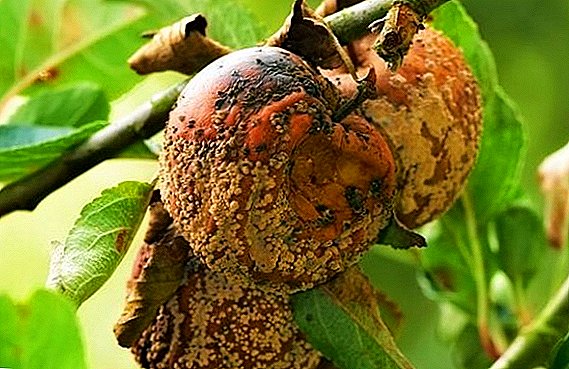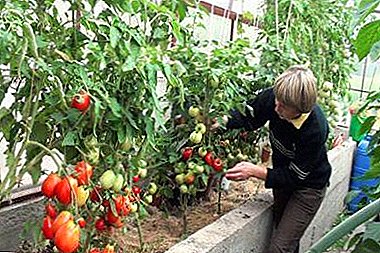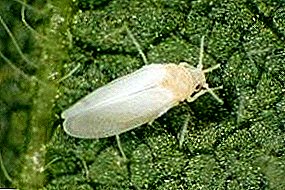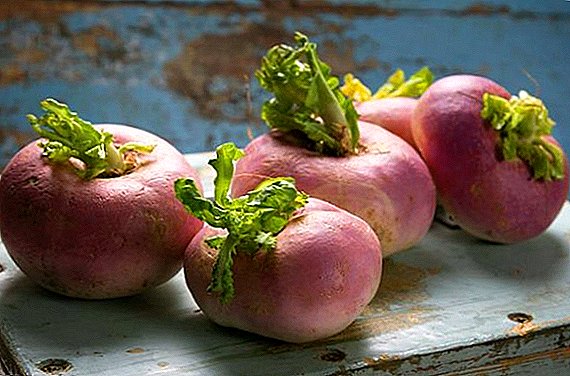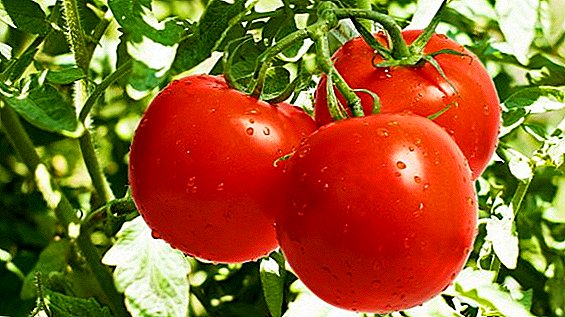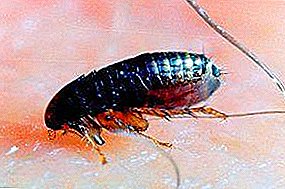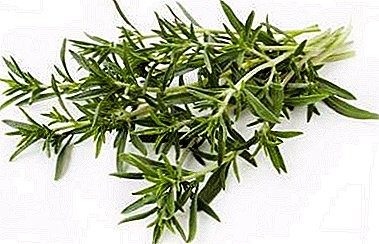
In European and Russian cuisine, as well as in the preparation of Caucasian dishes often use spicy herbs. With their help, you can improve the taste and aroma of the dish, and even give it new healthy properties. One such herb is savory.
Further in the article we will talk about what seasoning savory is, or kondari. You will learn what the benefits and harms of this spice are, where you can buy this plant and how to use it in cooking, and also see a photo of this herb.
What is it - kondari?
A savory (or kondari) is an annual plant of the family of Sacred, pepper grass, from which they make the spice of the same name. This plant has many other names: chebers, chobras, savory, scraper, savory, garden savory, summer savory. In Georgia, it is called Kondary, in Bulgaria - chubrica, in Armenia - citron, and in Uzbekistan - Dzhambul. The official name of the Kondari in Latin is Satureja hortensis Lamiaceae, in Russian - Saturea, in English - savory.
Savory is sometimes confused with the plant thyme, which also belongs to the family of Lambskin, but has very different properties and taste.
Savory seasoning has been known since the times of ancient Greece and Rome. Initially, this pepper grass grew in the Mediterranean, it could be found in the rocky terrain or among the rocky shores. The Greeks were the first to use savory as a spice, while essential oil of chabra was added in the manufacture of medicines. Later followed by the Romans. Many commanders, poets and orators often used savory as a means to improve memory and clarify thoughts.
After the conquests of the Roman Empire, the savory spice became known among many other nations, and due to its low cost and useful properties it was popular in Europe. In the Renaissance, healers advised to drink infusion of chabra with memory deterioration and digestive problems, and also often used it as a painkiller. It was believed that the aroma of the essential oil of chabra has a good effect on mental abilities and stimulates sexual desire.
A photo
The following are photos of spice kondary:





The benefits of spice
Savory is very popular today, as it is suitable for many dishes, and its composition contains many useful substances.
Savory contains:
- Vitamins:
- A (257 μg);
- B1 (0.37 mg);
- B6 (1.81 mg);
- C (50 mg);
- PP (4.08 mg).
- Macronutrients:
- magnesium (377 mg);
- potassium (1051 mg);
- calcium (2132 mg);
- phosphorus (140 mg).
- Trace elements:
- iron (37.88 mg);
- zinc (4.3 mg);
- manganese (6.1 mg);
- copper (850 mcg);
- selenium (4.6 mcg).
 Thanks to vitamins, savory reduces the risk of infectious diseases, improves eyesight, is a strong antioxidant. Besides, savory is used for the following purposes:
Thanks to vitamins, savory reduces the risk of infectious diseases, improves eyesight, is a strong antioxidant. Besides, savory is used for the following purposes:
- Balancing the nervous system. Exposure occurs through taste buds.
- Parasitic cleansing - Saturea is a good anthelmintic.
- Freedom from dry cough - savory has a expectorant effect and strengthens the immune system.
- Improvement of the condition in intestinal diseases - acid-base balance is normalized, heartburn and nausea disappear.
- Awakening of appetite - kondari stimulates taste buds, and a person begins to feel hunger.
- Painkiller.
- Relieving symptoms of fever. Heat passes, sweating decreases.
Harm
Savory increases blood pressure, so it cannot be consumed in case of hypertension. When arrhythmias and diseases of the brain vessels from the saturation, too, must be abandoned. In addition, this spice is prohibited for pregnant women, as it has an abortive effect, especially if consumed in large quantities.
Individual intolerance to chabra is also possible.
Use in cooking: which dishes are suitable?
Savory is suitable for cooking many dishes. In terms of sharpness, it is comparable to black pepper, therefore it is sometimes used as a substitute for it. Seasoning is added to meat dishes, including lamb, pork, chicken. Also suitable for fish and game dishes. The spice has a sharp, spicy and slightly bitter taste.. If there is a specific flavor in the meat (for example, lamb or some species of game), kondari will hide this flavor, add a spice and flavor to the dish.
Savory is called bean grass, as it perfectly complements dishes from legumes. This spice improves the taste, as well as relieves gas and bloating after eating dishes from peas and beans.
What else is savory suitable for? Kondary is suitable for other vegetables. When added to a fresh salad, savory will not only make the dish sharper, but also enhance the original flavor and aroma. It is also used when frying and boiling vegetables and mushrooms. True, because of a small bitterness in the taste, which gives savory, it is not suitable for champignons.
 It is worth remembering that the spice is very sharp, because when frying or stewing it is added at the end of cooking for just a couple of minutes.
It is worth remembering that the spice is very sharp, because when frying or stewing it is added at the end of cooking for just a couple of minutes.
Among other things, you can add savory and pizza, and marinades. It is almost universal spice for savory dishes.
Savory can be quite combined with other spices, especially sharp. For example, you can add it to a dish with paprika and black pepper. A mixture of chabra with marjoram or thyme feels harmonious, since these plants share notes in flavor. It also goes well with bay leaves, garlic, basil and oregano. As part of the famous blends of spices "Provencal herbs" and "Hmeli-suneli" also have savory.
How to cook spice at home?
It is not necessary to buy ready-made seasoning in the store, because you can plant savory in your garden or on the windowsill. And in this case, it remains only to properly prepare the leaves of the plant to get the spice.
First of all, you need to choose one of the varieties of chabra. They mainly differ in the color of leaves and the shape of the bushes, and yet some have a special taste. The most common are the following varieties:
- Garden savory. The classic variety of chabra, the most popular in Russia. It has a sweetish spicy aroma, reminiscent of thyme. Bushes are low, not more than half a meter, with pale pink flowers. The bush is unpretentious to the cold, so it is often grown in the middle lane.
- Lemon Savory. Perennial, more thermophilic, as a native of Africa. The leaves of the bush are smaller than those of garden chabra. Got the name due to the strong lemon flavor.
- Pink savory. Initially grown on the island of Crete, therefore it is also called Cretan. Perennial grass with flowers of a gray shade. Its flavor has more similarities with cumin.
- Jamaican savory (peppermint savory). The leaves have a pronounced mint flavor, bush high, with glossy leaves.
- Savory. The bush is of medium height, the flowers are white and the leaves are dark green. The variety is more thermophilic, and the taste and aroma is not different from the garden variety.
On the plot you can grow only garden savory, other varieties are suitable only for window sills or greenhouses. As for taste, if the goal is a classic spice, suitable for meat and vegetables, then it is advisable to choose garden, pink or mountain savory.
If you need a spice with a taste of lemon, suitable for fish, you need to stay on the lemon variety. If you want a mint flavor (thanks to him, the spice is more suited to sweeter dishes), you need Jamaican savory. It is worth remembering that it is easier to purchase garden savory in the store.
 How to prepare savory for spices:
How to prepare savory for spices:
- The plant must be mowed or cut before flowering begins (usually the middle of summer). The stems are cut at a height of 15 centimeters. Better to do it in dry weather.
- Stalks with leaves should be collected in bunches and hung to dry under a canopy. If the plant is grown on a windowsill, find a warm and well ventilated place to avoid mold.
- After the plants are completely dry, they are placed in tightly closed glass jars (it is better to use polyethylene) and stored in a dry and dark place. Dried billet will retain its flavor for 2 years.
- If desired, you can add basil, bay leaf, thyme, or another hot spice to the dried raw in a jar. After a couple of weeks, the flavors will blend and you will have a new seasoning.
Where can one buy?
Condars are rarely found in supermarkets, so search for seasoning is better in spice shops, online stores and pharmacies.
Savory is sold both in bulk and in packaging.. When buying by weight it is better to choose the product directly in the store, because on the Internet you have to buy "a cat in a bag." As in the shops of good tea, when choosing spices, the customer is offered to look at the product and evaluate its aroma. Savory should be spicy, moderately spicy and tart, slightly reminiscent of pepper and mint.
If savory buy in the package, it is necessary to give preference to famous brands. However, some manufacturers overestimate prices. Therefore, if you want to find a spice at an adequate price and get a quality product, it is better to purchase it at the pharmacy.
The price is also influenced by the brand of the manufacturer and the quantity of goods. For example, Kamis spices are among the most expensive. And when buying 30 or 40 grams of goods from any manufacturer, the price will be at least 50 rubles. At the same time, 100 grams of chabra can also cost 50 rubles. Goods of 200 grams can be bought for 100 p. and less, and in one of the stores in St. Petersburg a kilo of chabra is sold for only 300 rubles.
So, it is not difficult to buy savory or cook yourself, and this spice will be used in a variety of dishes, even if you experiment with the cuisine of other countries and mix seasonings with each other. The use of chabra gives everyone, even a particularly refined chef, a reason to wonder whether you should start using this seasoning along with black pepper and basil.


